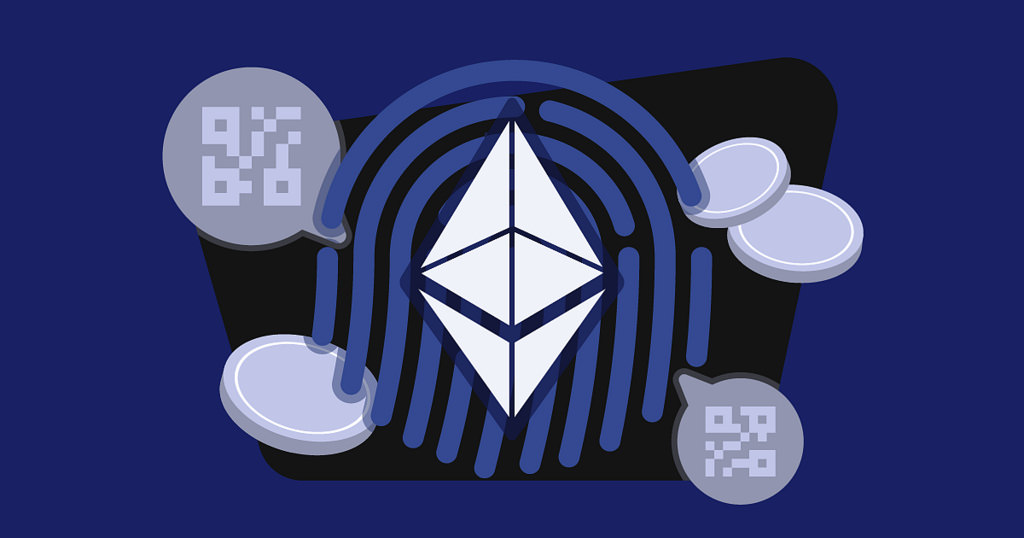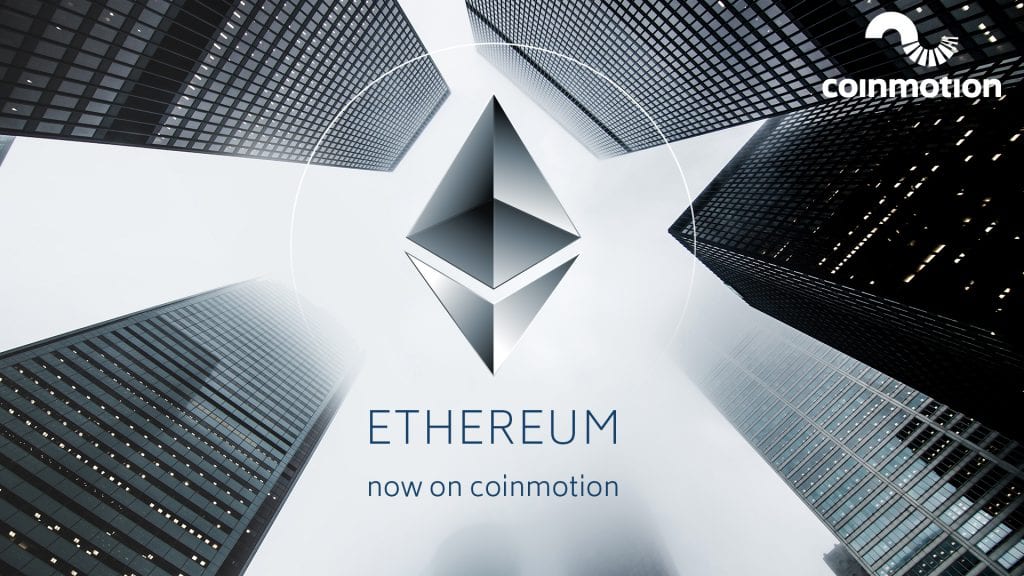Ethereum is one of the largest blockchain platforms in the World. Its own cryptotoken, ether, is the second largest cryptocurrency according to the total market cap. Therefore, ETH is right behind Bitcoin. In this article, we explain what Ethereum is and how it works.
Ethereum is the Global Supercomputer
The main difference in Ethereum, when considered against Bitcoin, is that Ethereum isn’t primary meant to be a form of money. It’s rather a blockchain platform for developing distributed applications, smart contracts and other services.
Ethereum was born in 2013, when Vitalik Buterin presented the Ethereum white paper. Buterin thought that it would be necessary to implement scripting languages to Bitcoin. Bitcoin community, nonetheless, thought that Bitcoin should be kept as simple and clear, so it could act as money. Thus Buterin created his own blockchain, which addressed the problems he saw in Bitcoin.
According to Buterin, blockchain has grand potential to many more things than only for the creation of a new form of money. If blockchain could be utilized to build distributed applications and services, it could revolutionize the technology. With blockchain, you could create secure and transparent ways to store information, handle democratic processes or create something like distributed exchange. With a programmable and scritable blockchain, the possibilities are as endless as the human imagination.

Distributed Applications and Services
Internet in itself is a distributed network. It was designed to survive a nuclear war due to its distributed nature. However: most of the applications and services we use over the Internet are not distributed, but heavily centralized. This applies to most services, such as cloud-storing, social media and the like.
The problem with centralized services is, that if a service encounters a problem, it affects all the users. For an example if Facebook’s servers go down, millions of people lose one of their primary ways of communicating. Or if the service stores data for users, it could take it down if it deems the data to be against its policies.
Ethereum tries to fix these issues of the centralized Internet with the distributed blockchain. With blockchain-based distributed applications, the services could be created in a way that none can control the information there. For an example a distributed social media could be resistant to censorship and a distributed cloud-storing service could be such that only the owner of the files can delete them.
Distribution has also the way of making systems more resistant. When an application runs on distributed blockchain, it doesn’t stop even if some of the nodes from blockchain were disrupted or broken. To break the entirety of Ethereum’s blockchain would be such a great accomplishment, that it is seen in practice as impossible. Thus the distributed services build on top of Ethereum’s blockchain are as resistant and trustworthy as Bitcoin-transactions.
The basic idea of Ethereum could be summed up in this way. Ethereum’s vision is to become a global supercomputer working on blockchain, which everyone could use.

Ethereum Allows Smart Contracts
One of the things Ethereum allows are “smart contracts”. A smart contract is a contract, which fulfills itself automatically when certain criteria are met. An example of a simple smart contract would be a contract, which states that if A sends B cryptocurrency C, then B will automatically send cryptocurrency D for A. The contract is enforced automatically by the Ethereum blockchain without anyone being able to interfere with it.
Of course, smart contracts could be far more complicated than the simple example described above. In theory every single contract that can be expressed in a mathematical way could be created as a smart contract. Of course if the contract is about something else than digital commodities, then there’s still the question of how jurisprudence sees smart contracts and how they bind.
Even though smart contracts could offer endless possibilities, their usage is still taking child’s steps. There are many reasons for this; some of the more important being the juridical uncertainty of smart contracts and the fact that smart contracts are such a new technology that there simple hasn’t been enough time for the appropriate understanding to develop. If cryptocurrencies themselves are a difficult subject, smart contracts are far more difficult.
Nowadays, smart contracts are used for things like digital collectibles and ICO. They can also reduce bureaucracy and cost of law and contracting.

Ethereum is the Heart of ICO, DeFi & NFTs
One of the most important uses of Ethereum is the creation of new cryptotokens. With Ethereum it is easy for anyone to create their own cryptotokens. Because these tokens take advantage of Ethereum’s blockchain, they share its safety features even if the user base of these new tokens would be far smaller than Ethereum’s.
What are ICOs
Especially companies have taken advantage of how easy it is to create new tokens with Ethereum. Ethereum has become on of the most used platforms which companies use to create their own cryptotokens. These cryptotokens work well with ICO-investing. Most of the ICO-investing is done on Ethereum’s blockchain.
ICO, Initial Coin Offering, is a method of investing, where a company sells a small amount of their own cryptocurrency before it is opened up for free trade in exchanges. The company gets resources, which it can use to invest in their products and services. Usually the company also promises that the new tokens can be used to buy their products, thus ensuring at least some value for the token. For investors the ICO could be profitable, because the value of these tokens could rise drastically in the markets.
ICO’s are a double-edged sword. On the other hand they can lower the barriers for investing, which opens it up for those with less money or resources in their hands. On the other hand many ICO’s have been used basically just as scams, where the company sells tokens without ever producing a service or real product.
Ethereum itself is an example of successful ICO. Before Ethereum was launched and its ether tokens went floating on markets, the developers sold a small amount of ether beforehand. The price of those ethers was about 40 cents. Nowadays ether’s price moves in hundreds of dollars, so the early investors could be said to have done a great deal.

Ethereum powers DeFi, NFTs, and Stablecoins in 2021
By 2021, Ethereum became the primary platform for decentralized finance projects (DeFi). Following Ethereum’s lead, DeFi is building a system of financial services that anybody can use. For example, there are lending services such as Aave, decentralized exchanges like Uniswap where no single entity controls user data, and apps that help blockchain work more effectively — such as Chainlink, and many others.
NFTs are non-fungible tokens that represent an art work or a unique object. For investors who value art and cryptocurrencies coming together, NFTs became a subject of interest.
Lastly, the crypto industry invented a new type of cryptocurrencies — stablecoins. Stablecoins’ value is attached (pegged) to the value of a fiat currency or another commodity, be it US dollar or gold. A stablecoins’ price can also be regulated by an algorithm. Many stablecoins are ERC-20 tokens — that is, they are Ethereum-based.
There’s No Maximum Amount of Ethers — For Now
Besides the scripting possibilities, there are also differences in Ethereum’s inner economy when compared to Bitcoin. Ethereum was never created to be a money, but a blockchain-platform for other applications. On the other hand Bitcoin was created to be a real, working currency to which none could tamper with.
This can be seen in the different way how ethers and bitcoin are mined. Bitcoins are restricted to 21 million. There can be never more than that in existence. With Ethereum, there have been no such restrictions — until mid-2021. For now, there can be infinite amount of ether — until the Ethereum London hard fork takes place in H2 2021. This hard fork will make the blockchain burn the network fee that users pay. I.e., Ethereum’s supply is partly limited.
Because ethers future supply isn’t restricted in such a ways as with bitcoin, there is difference in how their prices are formed. Because bitcoin supply is always limited, its price will grow if the demand for bitcoins grows. In turn, there has to be always more demand for ethers when more ethers are mined.

Ethereum and Bitcoin Answer Different Problems
There are several types of money and commodities in the world: euros, dollars, gold, bonds… All of these can exist mutually and many of them have their place. Different attributes are useful for different things.
Ethereum is one of the most interesting blockchain projects besides Bitcoin. Bitcoin and Ethereum are not enemies, but allies. Where as Ethereum tries to create a blockchain for multitude of applications, Bitcoin’s meaning is to be the immutable, resistant and fair money for the Internet age. Ethereum’s and Bitcoin’s successes are probably tied to each other in the general blockchain revolution of the world.
In the longer run, ether’s price has been growing, like with many other cryptocurrencies in general. With Ethereum, an investor should still keep the differences in supply in mind. If it is a good match for your investment goals, find out how to buy ETH securely and quickly.

